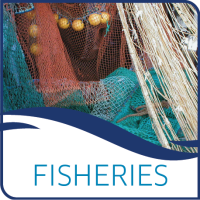VMS data for all UK registered commercial fishing vessels (=15m length) for the period 2009-2013 in ICES areas VIa, VIb, IVa, IVb, IVc, IIa, VIId, and VIIa have been combined with landings information to develop GIS layers describing the spatial patterns of landings of the Scottish offshore fleet from within the Scottish zone of the UK Fishing limits (200 NM). This project covers Nephrops (mobile and static), Demersal (mobile and static), Pelagic (Mackerel and Herring), Crab, Lobster, scallop and squid fisheries.
Data and Resources
- Representation of the use of marine space by commercial fisheries in marine spatial planningpdf
Abstract from ICES Annual Science Conference 2012.
Download
| Field | Value |
|---|---|
| Publisher | |
| Modified | 2020-01-07 |
| Release Date | 2016-03-23 |
| Identifier | 9e01b862-6487-47fa-a519-6b0a7259600c |
| Spatial / Geographical Coverage Location | Scottish Waters |
| Temporal Coverage | 2009-01-01 to 2013-12-31 |
| License | UK Open Government Licence (OGL) |
| Data Dictionary | VMS data for all UK-registered commercial fishing vessels (≥15m length) for the period 2009 - 2013 in ICES areas VIa, VIb, IVa, IVb, IVc, IIa, VIId, and VIIa have been combined with landings information to develop GIS layers describing the spatial patterns of landings of the Scottish offshore fleet from within the Scottish zone of the UK Fishing limits (200nm). Initially, VMS pings were filtered by speed (0< speed <5 knots) to distinguish fishing from steaming. Then, fishing pings were merged with landings data (i.e. logbooks). To avoid landings mis-allocation, fishing pings were assigned to overlapping ICES rectangles. Reported landings data were broken down by reported day and the daily landings in each ICES rectangle were equally distributed for those assigned pings in that day. All pings within a 2.5 km2 radius of major fishing ports were removed since the speed threshold applied during filtering, included periods of relatively low speed as vessels approached port areas. Total trip landings associated with removed pings were re-allocated to all remaining pings of each trip. Non-parametric density analysis was selected over the commonly used quadrate count to develop GIS layers describing annual distribution of fisheries. A Gaussian kernel density estimation with a data-driven bandwidth selection approach (smoothed cross-validation) had been used resulting in high quality contour maps which form a better estimate of the spatial extent of fishing activity and intensity. Several years’ data have been amalgamated and effectively showed spatial patterns in high-resolution for both intense and infrequently fished areas throughout that period. Only the amalgamated layers of the last five years data is provided. |
| Contact Name | Marine Scotland |
| Contact Email | |
| Public Access Level | Public |


